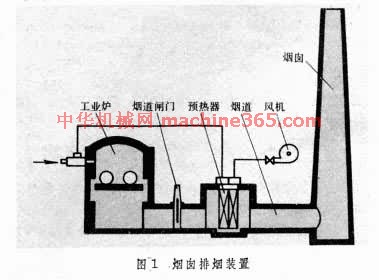1) stocker control


炉排控制
1.
the control system of incinerator, including the stocker control system, primary air control system, secondary air control system etc.
结合现场调试经验,介绍了深圳市南山垃圾焚烧发电厂焚烧炉控制系统,包括炉排控制系统、一次风控制系统、二次风控制系统等。
2) Grate mobile control


炉排移动控制
3) furnace temperature control


炉温控制
1.
The furnace temperature control and the after-burning control widely-used for continuous annealer in late years are mainly described.
主要介绍了炉温控制和近年来在连续退火炉中广泛应用的二次燃烧控制。
2.
Finally, Smith estimating and cascaded temperature control technology are applied to the furnace temperature control system.
分析用煤气作为燃料、同一煤气总管道给多台加热炉加热引起炉温变化的原因,传统PID控制普遍存在的时间滞后问题,介绍史密斯(Smith)预估控制原理,介绍串级控制与史密斯(Smith)预估控制相结合的自动控制技术在炉温控制系统的应用及实现。
3.
An intelligent controlling system used in furnace temperature control is designed by means of combining the capability of self-studying and selfadapting of single nerve cell with the traditional PID control so that the problems of large inertia and pure lag in furnace temperature control are solved.
将单神经元的自学习和自适应能力与传统的 PID控制相结合 ,构成一种智能调节器 ,解决炉温控制中的大惯性和纯滞后问题 ,最后对所设计的控制器进行数字仿真 ,证明该控制方法的可实现性和有效
4) temperature control


炉温控制
1.
Research of furnace temperature control for thermocouple auto-verification system


热电偶自动检定系统的炉温控制策略初探
2.
The design of intelligent temperature control system based on total distributed


集散式智能炉温控制系统设计
3.
To solve the problems of the temperature control in rolling reheating furnace,the strategy of human-simulated intelligent control is constructed on the basis of its principles.
针对钢坯加热炉炉温控制现状及存在的问题,依据仿人智能控制原理,建立炉温的仿人智能控制策略。
5) furnace control


炉况控制
1.
The problems such as regenerative reheating furnace needing high coal gas pressure,regenerator jamming,great oxidation loss and furnace control inexactitude are solved by ameliorating technique and strengthening operation management.
针对蓄热式加热炉要求煤气压力大、蓄热室易堵塞、氧化烧损大、炉况控制不精等问题,通过技术改进与加强操作管理得到基本解决,提高了蓄热炉的性能,改善了使用效果。
6) vermicularizing control


炉前控制
补充资料:工业炉:工业炉排烟系统
利用烟囱或机械装置将工业炉炉膛内的烟气排出炉外的系统。保证排烟通畅是工业炉正常使用的重要条件﹐排烟不通畅时﹐炉膛压力昇高﹐从炉膛四周的缝隙会逸出大量烟气而增加炉子的热损失﹐影响炉内气流的均匀分布﹐降低炉温均匀性﹐恶化操作环境。
排烟系统是由產生抽力的排烟装置和排送烟气的烟道所组成。常用的排烟装置有烟囱(图1 烟囱排烟装置  )﹑引风机或喷射管(图2 机械排烟装置
)﹑引风机或喷射管(图2 机械排烟装置  )等。
)等。
烟囱排烟是靠流入烟囱内热烟气密度小於烟囱外空气密度所產生的浮力﹐以克服烟道的阻力。利用引风机也可将烟气排出﹐或在排烟系统中某一部位装设一个喷射管﹐用高速喷射气体所產生的负压排出烟气。烟囱排烟不消耗动力﹐排烟温度不受限制。当排烟阻力很大而工业炉又间断运行时﹐可用引风机或喷射管排烟。喷射管适用於排除高温烟气﹔引风机适用於排除低温烟气。
烟囱分为砖砌烟囱﹑混凝土烟囱和钢板烟囱。烟道有地下烟道和架空烟道两种。地下烟道多用砖砌﹐架空烟道宜採用衬有耐火材料的钢板製成。
为了减少烟气对环境的污染﹐或因节能需要而在烟道内设置预热器时﹐都需要儘量提高烟囱高度并增加烟囱出口处的烟气流速﹐使之大於当地最大风速或至少不低於3米/秒﹐以避免烟气中的有害气体和烟尘向地面扩散。当烟囱高度达50米以上时﹐烟囱顶部的风速为地面处风速的数倍。烟气到达地面时已在离烟囱很远的地方﹐这时烟气已在逐步扩散中稀释到无害的程度。对燃烧固体燃料的工业炉﹐在排烟系统中还要设置各种形式的除尘器﹐使烟气排出时的含尘浓度降低到200微克/米3以下。
说明:补充资料仅用于学习参考,请勿用于其它任何用途。
参考词条